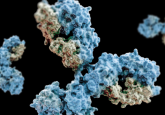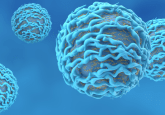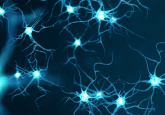Dendritic cells forge their own path

Dendritic cells alter the chemokine gradient they follow to direct themselves to the lymph nodes.
An immune response is an impressive feat of collective migration involving many cell types and molecules navigating their way through a complex environment. The question is, how do immune cells know which way they’re going and coordinate this movement?
It turns out, immune cells actively contribute to their own GPS, challenging previous understanding. Researchers at the Institute of Science and Technology Austria (ISTA; Klosterneuburg, Austria) studied how dendritic cells coordinate their movement and found that they manipulate the local chemokine gradient, rather than relying on an existing gradient. This insight improves our understanding of immune responses and could be applicable to how cancer cells guide their movement when metastasizing.
Dendritic cells are the messengers between the innate immune response and the adaptive response. Once they locate the site of an infection, they gather information and migrate to the lymph nodes to pass on this information and trigger the next step in the cascading immune response. It was known that this migration relies on two main chemokines, CCL19 and CCL21, which establish a chemokine gradient. Activated dendritic cells have a surface receptor called CCR7, which binds to the lymph-node-specific molecule CCL19. It was previously thought that activated dendritic cells, among other immune cells, move along this external gradient toward the location of higher concentration.
 Mobilizing CD4+ T cells and microglia against glioblastoma
Mobilizing CD4+ T cells and microglia against glioblastoma
Researchers discovered that an immunotherapy, called anti-CTLA-4, mobilizes microglia against glioblastoma as it causes CD4+ T cell infiltration of the brain.
In this study, the researchers took a closer look at the CCR7 receptor and “found that CCR7 not only senses CCL19 but also actively contributes to shaping the distribution of chemokine concentrations,” explained first author Jonna Alanko. Using live-cell microscopy imaging, flow cytometric analysis, confocal imaging and mathematical modeling, they found that as the dendritic cells migrate, they actively deplete the local chemokine concentration by internalizing chemokines via CCR7. With less of the signaling molecule in their local area, cells move further into areas of higher chemokine concentrations. This shows that dendritic cells don’t only register chemokine signals, but also shape these cues to achieve more effective collective migration.
Through computer simulations of the experiment, the researchers predict that this migration not only depends on individual responses of dendritic cells to the chemokine gradient but also on the density of the cell population. A collaborator on the study, Mehmet Can Uçar, explained that “this was a simple but nontrivial prediction; the more cells there are the sharper the gradient they generate – it really highlights the collective nature of this phenomenon!”
The researchers are keen to see how this dynamic regulation of signaling cues is used amongst other cell types, including T cells. These findings could have implications in designing new strategies to direct immune cells to specific sites in the body, for example, to target tumor cells.





